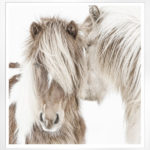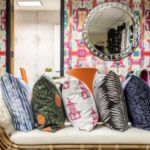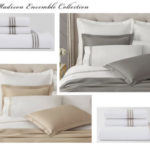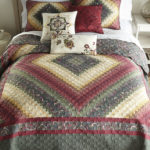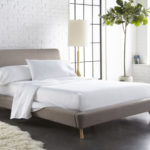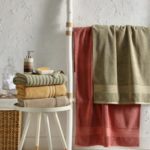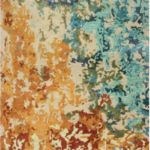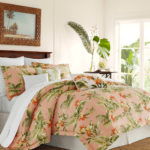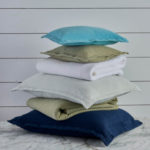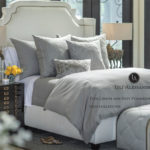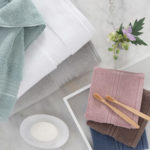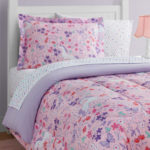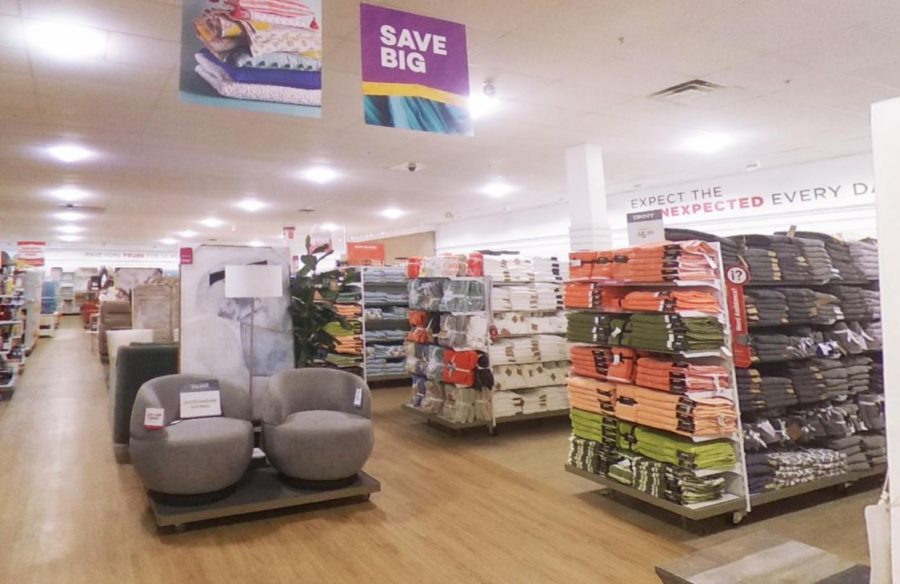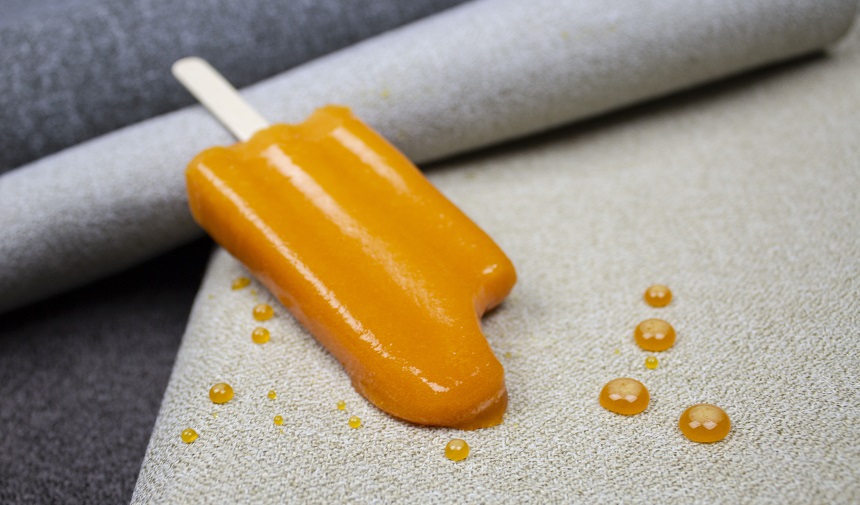
High Point, N.C. — When it comes to selling performance fabrics, brands say that having a thorough knowledge of the category is a must.
According to industry players, pre-COVID there was a demand for performance fabrics, and the market was beginning to move in that direction.
With that in mind Furniture Today spoke with several performance fabrics makers to find out what RSAs need to know about selling this category.
Jack Eger, senior vice president,
Crypton
It is good to offer a truly memorable moment in the presentation. For us, this can be as simple as a repellency demonstration with liquid beading up on the fabric. Or it’s good to make an illustrated, real-life comparison either with non-performance fabric and show the differential in strength and cleanability side-by-side.
Another key element is to set the definition of performance. You want to explain cleanability, repellency and durability. A clear definition of performance will automatically eliminate that secondary category of brands that sells itself as performance but really isn’t.
It’s important to distinguish your brand. You can give them the reasons as to why your product belongs in the performance category and provide facts about what sets your brand apart from others.
It’s also important to specialize your training modules to suit the various roles that exist at retail. First you have managers and owners, who need to be enrolled in the value proposition of performance, the marketing and sales support your brand offers, and the potential for upselling through COM and other custom programs.
In sales, there are two groups, one selling furniture on the showroom floor and another group designing rooms or residences. So, it’s two different kinds of sales staffers. You need to train them separately because their skill sets and knowledge bases are different, and often their clientele are at a different level of design interest.
Susan Sheil, sales and design consultant
Culp
COVID has exaggerated this whole movement. We have seen a lot of growth in this segment within our company. Some consumers are remodeling, and some are buying furniture for the first time. They all want performance fabrics that are available at an affordable price. Whereas before, performance fabric was something you worked with a designer to get, or there was a $600 or $700 upcharge to get a performance fabric.
A lot of other companies have a performance story. For Culp’s LiveSmart, we start with quality fabric that goes through lots of rigorous testing before we ever introduce it to the customer. We then explain how the fabric starts with high performance polyester yarns and the process encapsulates the entire yarn, not just the top surface.
Also, Culp’s LiveSmart performance fabrics are all converting to be Fluorine Free. Culp is continually researching and improving to give our customers the best quality product.
Iwan Nassimi, executive vice president
Nassimi
When we look at performance fabrics, we try to think beyond a singular feature such as stain resistance. To us, performance means that the material will endure and remain beautiful even after years of use.
For that reason, performance should be looked at more holistically to incorporate all the stress areas that are most often the cause for a fabric’s lack of durability. These include pilling resistance, seam strength, abrasion and stain resistance. A true performance fabric should address all of these, as our Resilience TX performance fabrics do.
Above and beyond that, one should consider the added benefits that may be of particular value in households with pets or small children, such as a liquid barrier or bleach resistance. Liquid barrier fabrics, such as Supreen, protect the furniture from the inside out, preventing liquids from penetrating and reaching the inside, keeping the furniture hygienic, smelling fresh and looking clean.
Anderson Gibbons, vice president of marketing
Revolution Performance Fabrics
With performance fabrics its important to make it simple: They are stain resistant, family-friendly and bleach cleanable. The easier performance fabrics for RSAs to sell are those that have a set warranty, since when you buy a performance brand, you are buying a promise that these will be easily cleanable performance fabrics.
When it comes to durability, it’s important to know the results of the double rub test and whether the product offers dynamic seam slippage. At Revolution, we run 20 different tests on our everyday fabrics that are in the mill before they even go to market. If the fabric fails any of those tests, it doesn’t get released.
I think that durability is becoming more of an issue with the weavers not making durable yarns. It can often be harder to understand the amount of durability with these beautiful fabrics since they aren’t actually performance fabrics if they can’t perform on someone’s sofa.
Sarah Dooley, director of upholstery
Sunbrella
First, it’s important to understand your customer and their lifestyle. In the case of performance fabrics, it helps to ask not only questions about their home and overall aesthetic, but also how they’ll be spending their time. Today, performance fabrics can be beautiful, easy to clean and soft. This makes them a perfect option for families with children and pets or for someone who likes to entertain.
Based on the customer’s design goals, it is helpful to merchandise performance fabrics by explaining their role in designing a complete and comfortable home. Choosing a performance fabric for larger furniture items will provide a soft yet durable foundation that can be built on with throw pillows in fresh color pairings, patterns and other motifs to make a consumer’s space feel uniquely theirs.
It can also help to call out the benefits of performance fabrics for certain environments. For example, while Sunbrella performance fabrics are suitable for both exterior and interior environments, our key selling attributes for indoor spaces include being a worry-free choice offering durability, comfort and stain resistance without sacrificing style.
Sunbrella upholstery fabrics are also Greenguard Gold certified for low chemical emissions, contributing to healthy indoor air quality.
In addition, it’s important to help customers understand that some performance fabrics are made with surface-dyed yarns and are only protected by an external coating that wears over time. In contrast, Sunbrella fabrics are woven with proprietary yarns made with durable fibers completely saturated with color, offering superior fade resistance.
A final tip is to do some research and communicate a brand’s commitment to quality and craftsmanship as well as the longevity of the fabric.
Jeff Smith, director of residential sales
Ultrafabrics
Our customers, and ultimately the end user, expect that materials will not only hold up to any situation in or out of the home, but also expect the fabrics to remain attractive, easy to clean and safe for their families.
Typical woven performance fabrics are made from polyester, cotton, viscose, olefins, etc. In time, these fibers will begin to wear, and any protective coatings will diminish. While manufacturers have improved the performance aspect of their fabrics with different finishes, some of these finishes are looked at as environmentally unsafe, while other plant-based options only protect against water-based stains. That is where understanding the needs of performance from both technical and practical aspects are important in order to recommend the right product.
Ultrafabrics’ double rub/abrasion results range from 200k to 400k compared with the industry standard of 15k, while our hydrolysis testing ranges from 10 to14 weeks compared with the industry standard of five weeks. On a practical level, our enhanced attributes are inherent to the product and will not wear like a topical treatment. Ultimately our fabrics are engineered for all aspects of performance without sacrificing comfort, look or sustainability.
Patrick Shelton, senior vice president of sales
Valdese Weavers
The last thing a retail salesperson wants to do is sell their customer a performance fabric that doesn’t meet the needs of their customers’ space and lifestyle, potentially leaving the customer disappointed and unlikely to return.
It is important to be educated about different performance brands by using the resources the performance brand’s company offers. We recommend visiting the brand websites and browsing the product features and FAQ pages.
We also recommend taking advantage of virtual or in-person training with a brand representative. For example, InsideOut Performance Fabrics has an outreach program in which a training manager will come to the retail store or host a virtual training session with all sales staff to ensure they feel comfortable speaking about InsideOut Performance Fabrics.
It is also important to remember that not all performance fabrics have the same characteristics. Many performance brands check the box of being durable, easy to clean and liquid resistant, but what if the customer needs fade resistance for outdoors or an interior room with a lot of light. What if they want something that is bleach cleanable for a room that sees a lot of messes? What if they require a fabric that is PFAS free?
Also, showing a customer how a performance fabric actually performs can go a long way. A quick demonstration of spilling a liquid, such as red wine or soy sauce, on a sample piece of fabric and showing how easy it cleans can significantly increase buying confidence for a consumer.
See also:
Anne covers the evolving landscape among retailers and manufacturers in the bedding, technology, e-commerce and disruptive retail segments.




